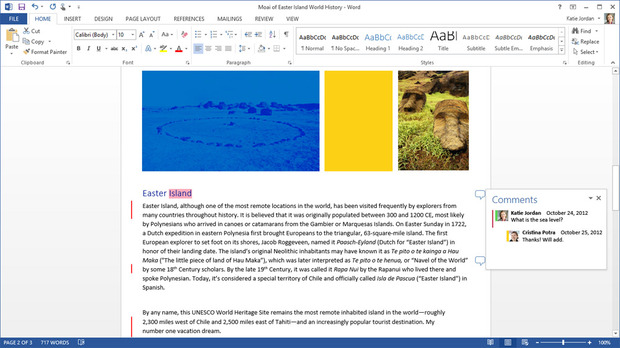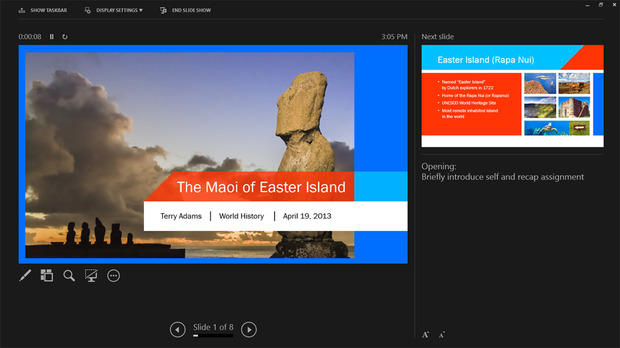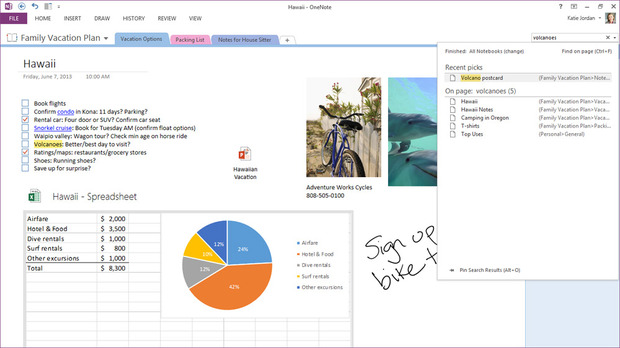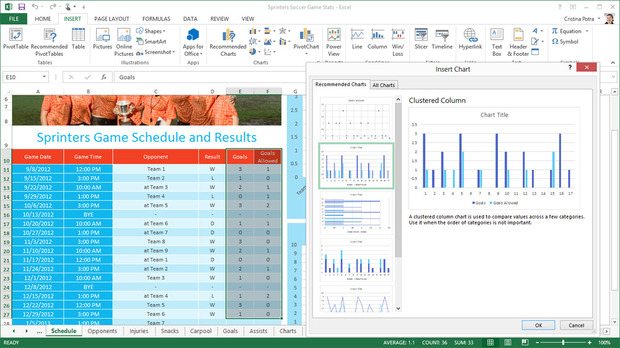Microsoft Office 365
The old dog learns new, cloud-centric tricks for the modern user

By Evan Orensten and James Thorne

We’ve been trying out Windows 8 for a while now—not to mention testing the new generation of tablets and notebooks that has sprung up around the OS. Our overall impression is that it addresses the market’s demand for content on-the-go, cross-platform syncing and the versatility of touch screens matched with the power of a mouse and keyboard.
With the official release Office 365 Home Premium and Office 365 University Microsoft is making a big statement about how users use software and share data in the cloud, and taking advantage of the new Windows 8 platform in the process. Essentially, Office 365 is a go anywhere, do anything version of the business staple. Subscribing to the service, you can download a full version of Office on up to five devices, sharing content between them via Skydrive, where Office 365 users receive an additional 20GB of storage on top of the standard 7GB. What’s more, you can access programs, documents and personal settings on any computer in the world by logging into Office online and streaming the programs. This is important to note—it’s not accessing a browser-based platform (familiar to many of us on the likes using Google Docs or the currently available Office web apps)—it allows you to connect to Office 365 from any computer and download a usable version for the duration of your work. This does not count as one of your five installs, and it’s not permanently installed on the device. It’s just there while you need it. In our tests over the last week we found this to be pretty compelling and easy to use.

“SkyDrive is really the backbone to the entire service,” explains Jevon Fark, Senior Marketing Manager at Microsoft, who gave us a hands-on tour of Office 365. “That’s where SkyDrive speaks to all your devices.” The cloud-based system is aimed at users who need constant access to content—a demographic that is increasingly all of us. Office 365 is taking a cue from productivity resources like Evernote and Google Docs, offering the convenience of an app or web service with the power and capability of a fully-fledged program suite with 22 years of history to back it up.
Fark cites services like HBO Go, Amazon, Netflix and Spotify as the model for the new face of Office, even referring to the streaming service as “Office On Demand.” The distinguishing factor here is the power you get, which is significantly above any paid-for app. “This is an entirely new kind of Office… it’s the most ambitious version that we’ve released and it’s really a reinvention of Office as a service, in the cloud, without compromise,” says Fark. “I’m not talking about Office in the browser that exists already with the Office web apps. This is a full, rich Office with services underpinnings.”

And it’s not just the cloud that is becoming more efficient and intuitive—Office products have been revamped as well. The “touchification” of the suite is more or less complete, and Microsoft’s software is now collapsing the divide between desktop and mobile computing. With Office 365, Microsoft is also moving from the windfall updates, giving users new features and UI improvements as they become available.
All signs point to a more progressive workflow, and Fark hints to the future, saying, “It’s a major goal of ours to continue to make Office smarter and to be a step ahead of the user.”

Office 365 is being offered for $100 annually (with installs on 5 devices), and university students pay only $80 for four years of service (on a single device), which works out to roughly the cost of a cup of coffee each month. Users can access the service on demand from any computer on both Mac and Windows 8 platforms as often as they like. Subscriptions also come with 60 minutes of Skype world minutes each month that includes free international calls to mobile and landline phones.
Find out more about Microsoft Office 365 at Office.com.












